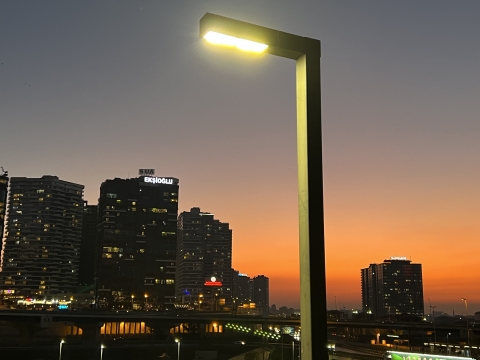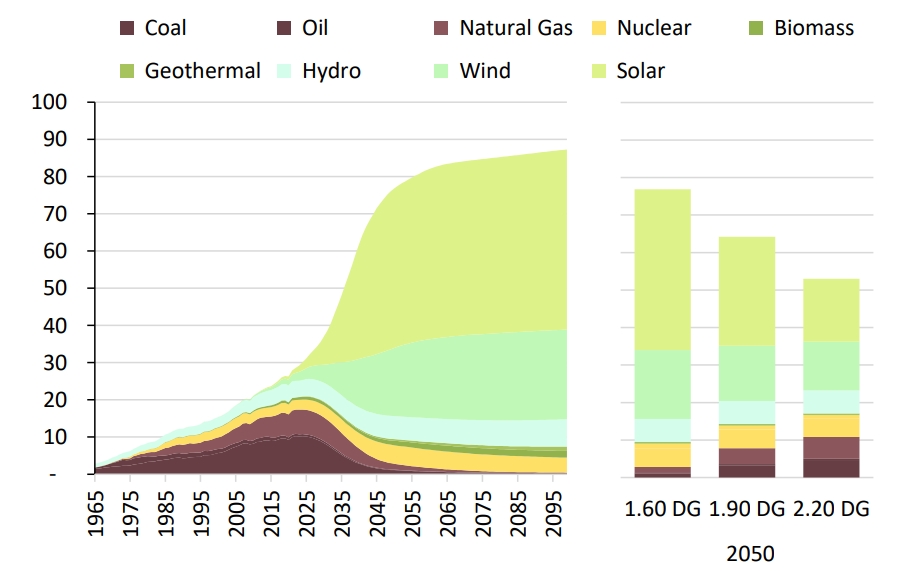
Recently, we have seen that energy is moving towards electrification. The grid infrastructure must adapt to this trend. The infrastructure is being prepared for this with techniques such as high-voltage direct current (HVDC) lines, renewal and storage systems.
Today, low-carbon sources provide 40% of global electricity. Emissions from this electricity generation were 1.7 kg CO2/kWh in the 1960s, but today they have been reduced to 0.57 kg CO2/kWh. Changes such as solar, wind, battery storage, and the transition from fossil fuels to natural gas and nuclear have been effective in reducing this CO2 emissions. For example, in Europe, solar energy production has increased by 60% and wind energy by 22% since 2022, while the share of electricity produced from fossil fuels has fallen from 34% to 22%. China's transformation is another strong example. Ten years ago, solar and wind accounted for only 8% of the country's energy capacity, but by the end of 2024, this figure will rise to 39%. This trend means that future consumption will be met only by clean energy and the need for fossil fuels will decrease. Despite all these developments, it is seen that the use of fossil fuels will continue in the coming years and then enter a decreasing trend. Considering this necessity, it is clear that importance will be given to issues such as carbon capture, hydrogen, low-carbon natural gas and biofuel use.
The effects of legislative regulations and subsidies on these technologies should be well considered for the increase in investments in geothermal, heat pumps and passive buildings. The concept of energy efficiency, which has settled down to end users, is evaluated as an energy source together with developing technologies.
In fact, investments in renewable energy and electrification not only clean energy, but also cause a decrease in energy costs. Solar, wind, batteries and electric vehicles are developing and multiplying so rapidly that clean energy is also taking its place in the system at a similar pace.
Waste emissions from sectors that are difficult to electrify and reduce CO2 emissions, such as heavy industry, aviation and cement, are being driven by the application of hydrogen, biofuels and carbon capture. The global energy system looks set to continue moving towards a cleaner and safer energy future.
Last year, solar installations increased by 60% compared to the previous year. The raw materials required for these technologies also drive the mining sector. At the same time, fossil fuel consumption has also increased, with global CO2 emissions reaching 39 gigatons last year. The Global Energy Scenarios explore what needs to be done to achieve a global warming consistent with 1.6 degrees Celsius compared to the pre-industrial era. The graph below shows the projected global energy resources for the 1.6 DC, 1.9 DC and 2.2 DC scenarios.

In 2050, solar and wind are expected to account for 44% of primary energy supply. However, high costs currently make this difficult in the medium term. The COP28 climate conference last year, which agreed that central banks should lower interest rates and governments should triple renewable energy by 2030, will support this development. One of the most important issues at COP29, which is ongoing this year, is again financing… The transition to renewable energy also stems from the accelerated electrification of end-use in buildings, industry and transportation. For a decarbonized energy future, agreements between countries, legislative arrangements, financing supports and restrictions such as carbon taxes at the border will continue to guide.
Sources: BOTAŞ, EPDK, IGU, RYSTAD
- Log in to post comments

